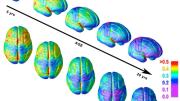Ethnographer Robert A. McKennan, Ph.D. ’33, spent 1929 through 1933 documenting life in several remote Native villages in the interior of Alaska. In addition to producing landmark scholarly works based on his findings, he kept interesting journals about his struggles to survive in the wilderness, his frustrations as an anthropologist, and his field methods. These folksier writings now appear as Tanana and Chandalar: The Alaska Field Journals of Robert A. McKennan, edited by Craig Mishler and William E. Simeone (University of Alaska Press, $45). McKennan (1903-1982) went on from Alaska to spend the rest of his career at Dartmouth, where he was cofounder of the anthropology department. As a graduate student at Harvard, he studied under physical anthropologist Earnest Hooton, who measured people, and McKennan dutifully measured Native Alaskans, write the editors, “in service to the now largely discredited field of anthropometry.” McKennan’s journals suggest that he did not enjoy this measuring, finding it intrusive. One wonders how he explained its purpose to the people he sized up. But he did quite a lot, as on March 29, 1930:
 |
| McKennan doing anthropometry in Upper Nabesna, Alaska, in 1930. From the book. |
| Courtesy of University Archives, Alaska and Polar Regions Collections, Rasmuson Library, University of Alaska, Fairbanks |
Measured up Big John today. He didn’t seem to resent it for afterwards he brought me up a chunk of moose meat. In Big John and Paul I seem to have two faithful retainers. Paul was in the other day with a load of bread (I have no oven). Really it was good, though no doubt the fact that I didn’t see Paul knead it added to my enjoyment. Paul even took me for a short trip one day on the plea that I was staying inside too much and needed the fresh air.
Paid a late call on Paul. He had just come in from his trap line with seven muskrats and the whole family including Big John were having a feast. Nothing would have it but I must sit down and join them. To have refused would have been most discourteous, so I complied as genially as possible. To tell the truth baked muskrats are not at all bad, though the process of cooking it was a trifle startling to the uninitiated. The rats, having been skinned, were simply placed in a bake pan along with a little grease and shoved into the oven. Out they came, nice and brown to be sure, but looking frightfully alive to me.
Each rat was on its back, four feet sticking in the air, the claws and fur about the feet being left on. The huge incisor teeth gave a diabolical grin to the head. Indeed the whole picture was much the same as though a fire had swept through a caviary. Still, as I said, the flesh itself was quite good. Since muskrat is quite greasy and all of us were using our fingers, a dirty rag was kept constantly in circulation. Thus are the amenities observed.





